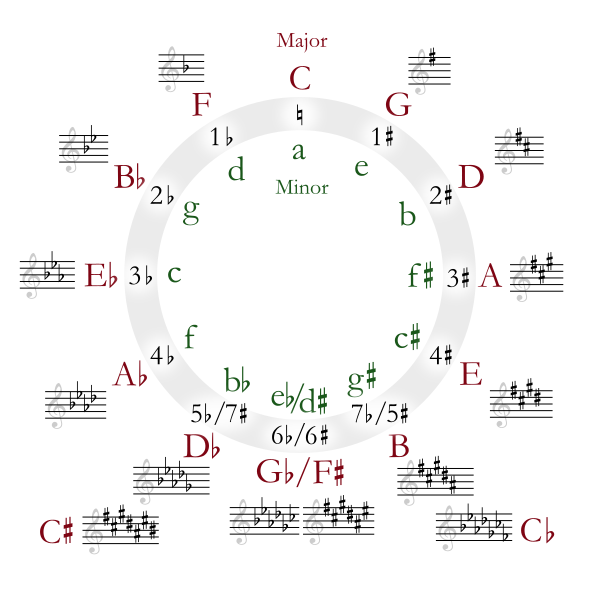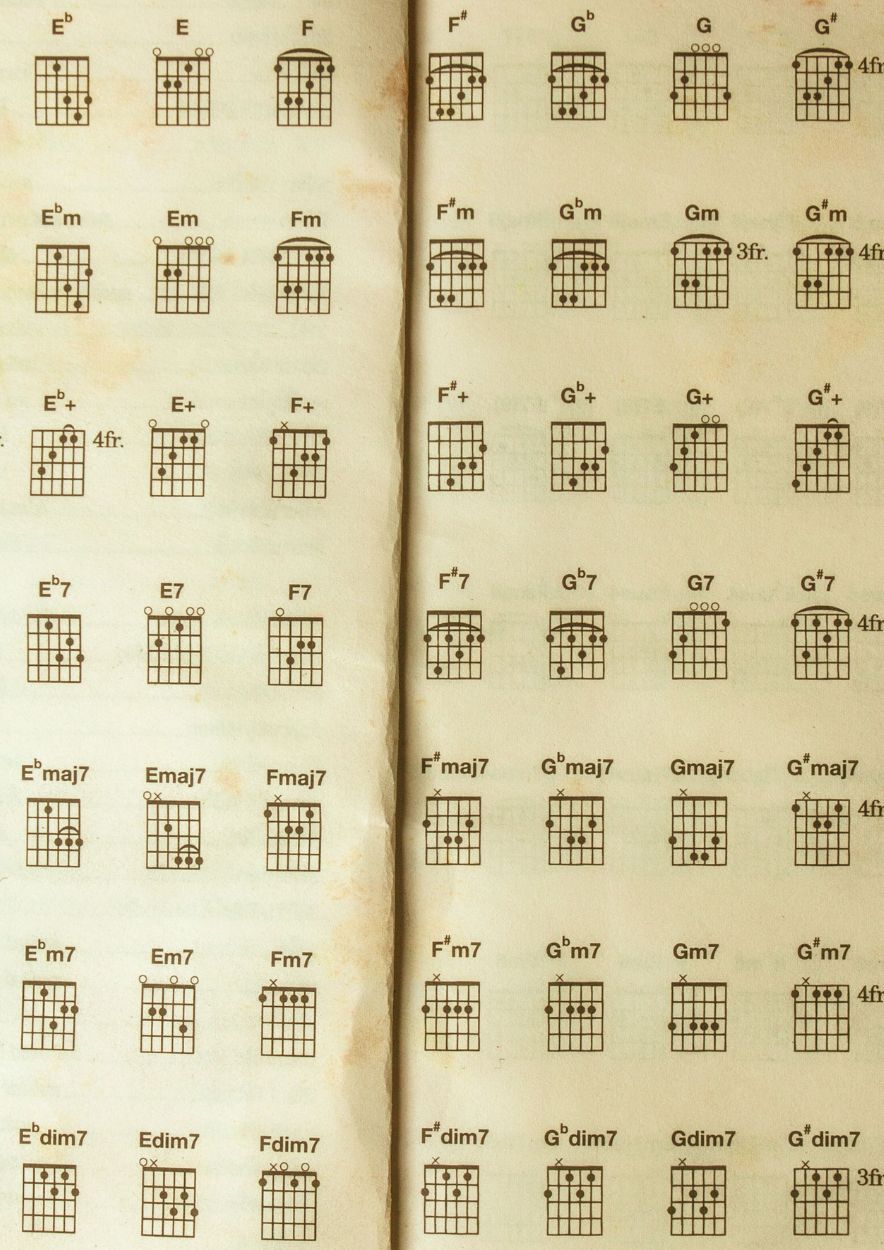- Home
- Classical Fingerstyle Portal
- 15 Actionable Guitar Lessons
- Classical Guitar Technique
- Guitar Lessons
- Beginner Lessons
- Guitar History
- The Renaissance Guitar
- Guitar Time Line
- Classical Guitar Blog
- Contact
- About Author
- Site Search
- Privacy Policy
- Site Map
- Classical Guitar Study Course 3.0
- Instant Classical Guitar Repertoire
- Classical Guitar Lessons For Beginners
Understanding the Circle of Fifths:
A Journey of Musical Mastery...
Welcome to the phenomenal world of the circle of fifths!
Regardless of where you stand in your musical journey, whether you're just starting to strum your first chords on a guitar, crafting intricate symphonies as a seasoned musician, passionately imparting the joys of melody and harmony as a dedicated music instructor, or simply harboring a curiosity for the vast world of music, you're setting out on a transformative voyage.
This journey has the potential to reshape your musical experience in profound ways. Central to this expedition is the circle of fifths, a revered cornerstone of music theory renowned for its potency and elegance, poised to become your steadfast companion throughout this exhilarating adventure.
Visualize the circle of fifths as a navigational chart tailored for musicians, meticulously guiding you through the expansive terrain of musical keys and their intricate relationships. It stands as a concise yet visually enchanting depiction of the 12 fundamental key signatures that constitute the entire musical spectrum.
This circular diagram, characterized by its interlocking sequence of fifths and fourths, transcends mere theoretical abstraction; instead, it emerges as a pragmatic instrument capable of enriching your comprehension of music and igniting your creative spark.
Fundamentally, the circle of fifths serves as a graphical representation of the interconnections between musical keys. As you traverse the circle in a clockwise direction, you ascend by intervals of fifths (or descend by intervals of fourths), signifying that each successive key incorporates an additional sharp in its key signature compared to the preceding one.
Conversely, navigating counterclockwise introduces flats into the key signatures. This straightforward concept underpins your grasp of key transitions, chord progressions, and harmonies within the realm of music.
The influence of the circle of fifths on your musical expedition cannot be overstated. It unveils a trove of insights and practical applications capable of substantially enhancing your prowess as a musician, composer, or educator.

Attribution: Just plain Bill, CC BY-SA 3.0 , via Wikimedia Commons
Grasping the Concept of the Circle of Fifths
The circle of fifths is a revelatory tool that every guitarist needs on their journey towards improved music theory understanding. It paints a vivid picture of the relationship between musical keys, illustrating how one can seamlessly progress from one to another.
But why is it called the "circle of fifths"?
At its core, the circle of fifths charts the progression of a series of notes that are each a fifth apart. When arranged in a circle, these notes form a cycle that repeats indefinitely, hinting at how interconnected all musical keys are. If you want to decode key signatures, understand scales, or uncover the magic behind chord progressions, the circle of fifths is your guide!

Effortless Key Transitions: Power of the Circle of Fifths
Have you ever been playing music with friends and you needed to change the song's key on the spot? That's where the circle of fifths comes in handy. It's an invaluable tool designed to help musicians transition effortlessly between keys.
By visually mapping out the connection between keys, the circle of fifths gives you the ability to see – and understand – the steps required to shift from one key to another. It's like having a GPS to navigate the complex landscapes of music theory!
For guitarists looking to compose their own music or create original songs, the circle of fifths is like a secret weapon. It guides you through choosing chord progressions that sound harmonically compatible and naturally flow together. The circle of fifths is not just a theoretical concept. It's a tool that delivers practical results you can hear in your music.

Unlocking the Door to Enhanced Songwriting and Composing
For guitarists looking to compose their own music or create
original songs, the circle of fifths is like a secret weapon. It guides you
through choosing chord progressions that sound harmonically compatible and
naturally flow together. The circle of fifths is not just a theoretical
concept. It's a tool that delivers practical results you can hear in your
music.
Just like learning to play the guitar, understanding the circle of fifths comes with its share of challenges. For beginners, it can seem daunting to grapple with this complex concept, let alone apply it to their music. Intermediate and advanced guitarists might need to tune their existing knowledge as they delve deeper into the applications of the circle of fifths.
But remember, every great journey starts with a single step. With regular practice, an open mind, and a bevy of online resources at your disposal – including tutorials, forums, and instructional guides – you can overcome these hurdles.
And the reward?
A richer musical understanding that transcends beyond just playing the guitar.

The Beauty of the Circle of Fifths
Overall, the circle of fifths is more than a musical tool. It's a bridge that connects your current musical proficiency to a higher level of understanding and expression. It equips you with the vocabulary to speak the universal language of music.
I truly believe that the Circle of Fifths holds immense value for musicians across various genres, be it classical, rock, country and western, jazz, or any other style. Once you grasp its essence and recognize its potential in enhancing your comprehension of music theory, you'll come to appreciate its true significance.
In essence, the circle of fifths serves as a visual embodiment of the intricate harmony that defines music theory. It's the key to unlocking seamless transitions, rich compositions, and an enlightened understanding of the guitar's language. When used correctly, it sparks inspiration, clears confusion, and empowers musicians.
Are you ready to embark on this journey of musical mastery?
Remember, the path may include moments of excitement, curiosity, confusion, and frustration. Yet, every stumbling block will lead to a moment of clarity, empowerment, and that satisfying 'Aha!' moment of discovery.
So, buckle up, and let's explore this fantastic realm of music together.
Happy playing!

For more on the Circle of fifths go here...
Recent New Pages:
What is Classical Guitar Playing?
Arpeggio Beginner Guitar Lesson Classical-Fingerstyle Portal
Blog Technique Free Guitar Lesson
Guitar History Guitar Instruction Guitar Lessons
Guitar Time Line Malaguena Memorizing Music
Music Notation Music Notation Primer Sight Reading
Sight Reading Guide Theory Work Sheets Renaissance Guitar